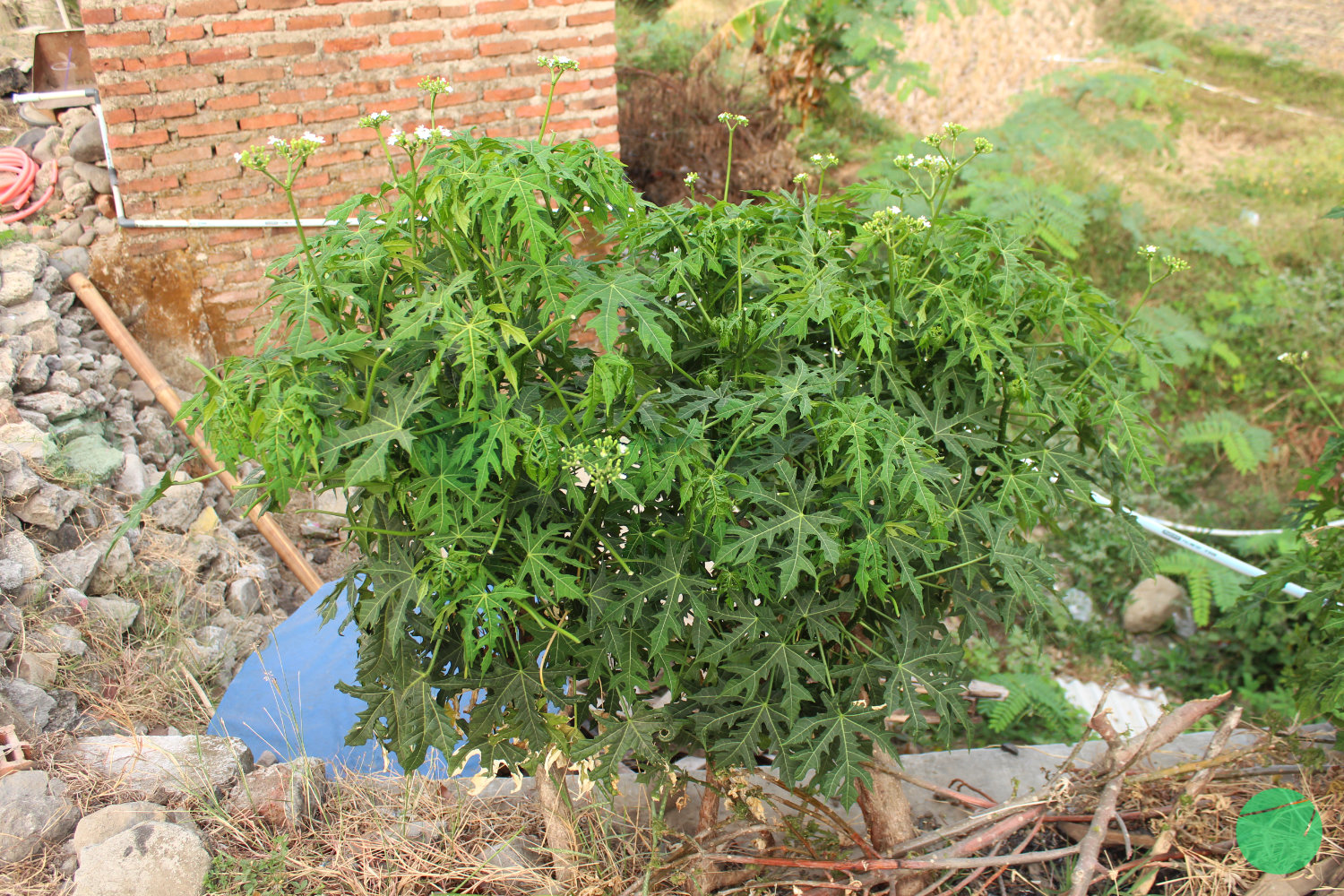Naming Identity
Chaya is scientifically called Cnidoscolus aconitifolius in Latin. This plant has several popular names in English. Among them are cabbage-star, Mayan tree spinach, tread softly, and tree spinach.
The most widely used common name for this species, Chaya, comes from the Maya word for “chay”. Other common names refer to its urticarial hairs such as ortiga, pica, tread-softly, and spurge nettle (Vélez-Gavilán, 2022).
Taxonomy
Kingdom | Plantae |
Phylum | Tracheophyta |
Class | Magnoliopsida |
Order | Malpighiales |
Family | Euphorbiaceae |
Genus | Cnidoscolus |
Species | Cnidoscolus aconitifolius |
Origin
Tree spinach plant is a shrub or small tree that grows naturally in Southern Mexico and Central America. This plant is believed to have originated from the Yucatan Peninsula and then spread to various parts of the world with tropical and warm climates as a cultivated plant. The history of its cultivation can be traced back to the Mayan civilization with the aim of its cultivation being to obtain edible leaves (Vélez-Gavilán, 2022).
Its distribution includes countries in South America, the Caribbean, Africa, Southeast Asia, Oceania and the southern part of the United States. Even though it has been widely distributed to various countries in the world, there have been no reports regarding its potential as an invasive plant.
Since being introduced to Indonesia in 1998, the tree spinach plant has begun to spread in the West Java region, and is often found in the Tasikmalaya Regency and Banjar Regency areas (Advent Simamora et al., 2022). For this article, the author also found the tree spinach plants on the side of the road in the Setu Patok lake area, Cirebon Regency.

Shape Description and Growth
Tree spinach plant is a shrub or small tree that can grow to a height of up to 3 to 8 meters. Chaya is easy to grow and does not easily experience damage from insects. This plant is also known to be tolerant of high rainfall and can tolerate drought. The tree spinach plant or Cnidoscolus aconitifolius species has 4 varieties, namely, estrella, picuda, chayamansa and redonda.
The estrella and picuda varieties are more similar to the wild type. The estrella variety has leaves with five dentate lobes that are spread out and do not overlap, almost lacking the stinging hairs of the wild type. The chayamansa variety is the most widely cultivated variety. This variety has ovate leaves with five lobes where the three lobes in the middle usually overlap each other. The leaves have short, stinging hairs, found only along the petiole and lower edge. Fruits are rare on this variety and it never produces viable seeds.
The redonda variety has three-lobed leaves that are intact to slightly serrated, without any stinging hairs. The immature leaves are often intact. This variety produces pollen, but less than 1% is viable and seed production is extremely rare (Vélez-Gavilán, 2022). Meanwhile, in Indonesia there are only two local varieties, namely the picuda and redonda varieties, with the picuda variety being more widely cultivated by the community (Advent Simamora et al., 2022).

Ingredients, Culture of Consumption as Food and Benefits of The Tree Spinach Plant for Health
The tree spinach plant leaves are known to contain high levels of vitamins, beta-carotene, and protein and are rich in calcium, phosphorus, iron, thiamin, riboflavin, and niacin. However, raw chaya leaves can be poisonous because they contain glucoside which can release cyanide poison. Therefore, tree spinach plant leaves must be cooked before consumption to deactivate the toxic components.
The nutritional value contained in the tree spinach plant plant is highly valued in Yucatan, especially for its protein content, to the point that it is sometimes considered suitable as a meat substitute. A report written by Ross-Ibarra & Molina-Cruz (2002) states that in the past, when meat was scarce or expensive, tree spinach plant was much more popular. But as meat prices fall in modern times, the tree spinach plant's popularity has declined. The tree spinach plant is also viewed by many in the younger generation as a poor man's food, a stigma that does nothing to add to its popularity. The use of wild the tree spinach plant as food during famine is confirmed by a 16th-century Maya text from Chi-lam Balam of Chumayel and 16th-century Spanish chronicles. In Indonesia, the tree spinach plant's leaves are consumed as a vegetable, such as cassava leaves, spinach and kale.
The tree spinach plant is also reported to contain hypoglycemic, antioxidant, analgesic, and anti-inflammatory effects. So its benefits are widely used to treat rheumatism, digestive disorders, and inflammatory diseases. It doesn't stop there, this plant is also reported to have an important nutritional contribution as poultry feed, especially in Africa (Verónica Bautista-Robles et al., 2020).